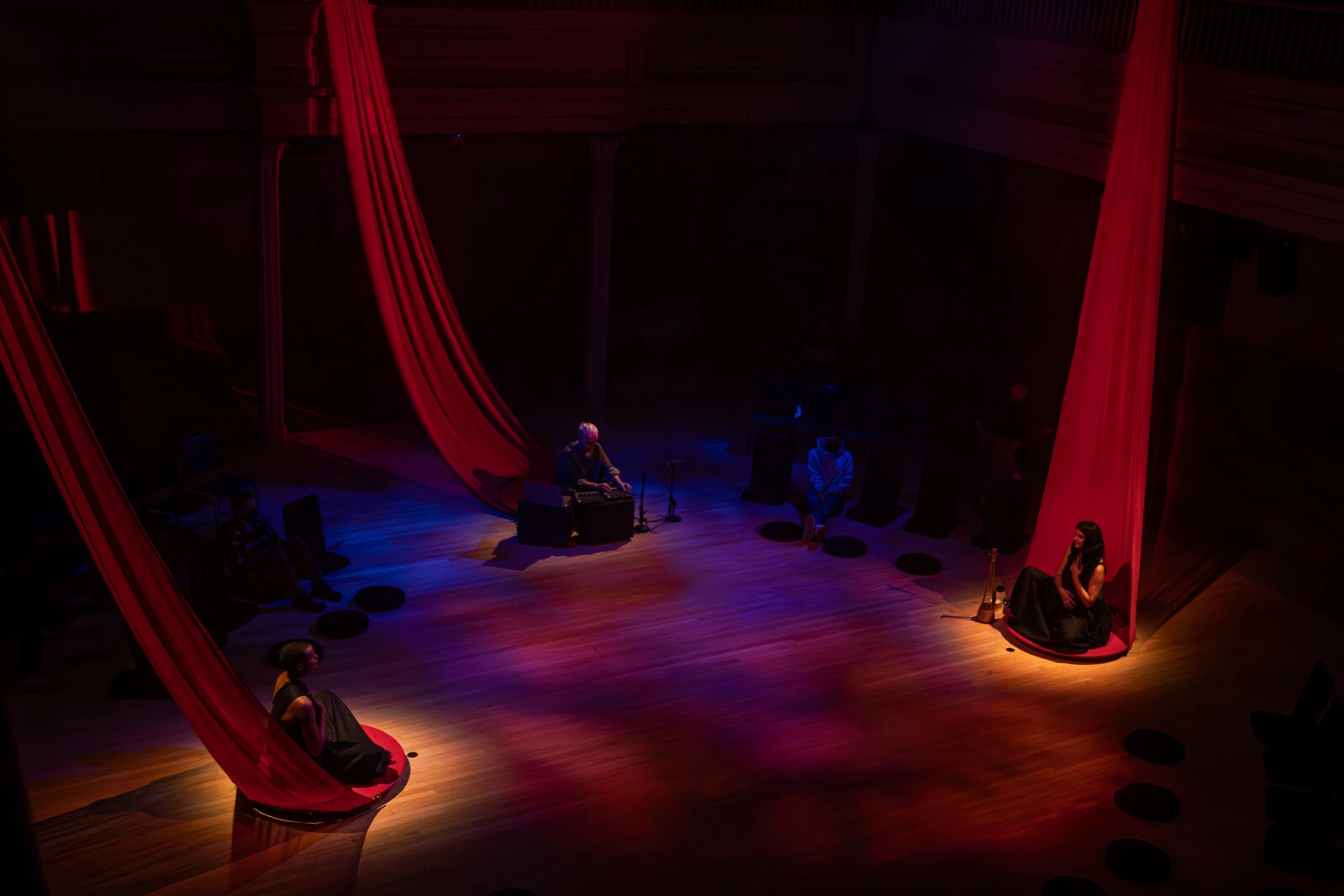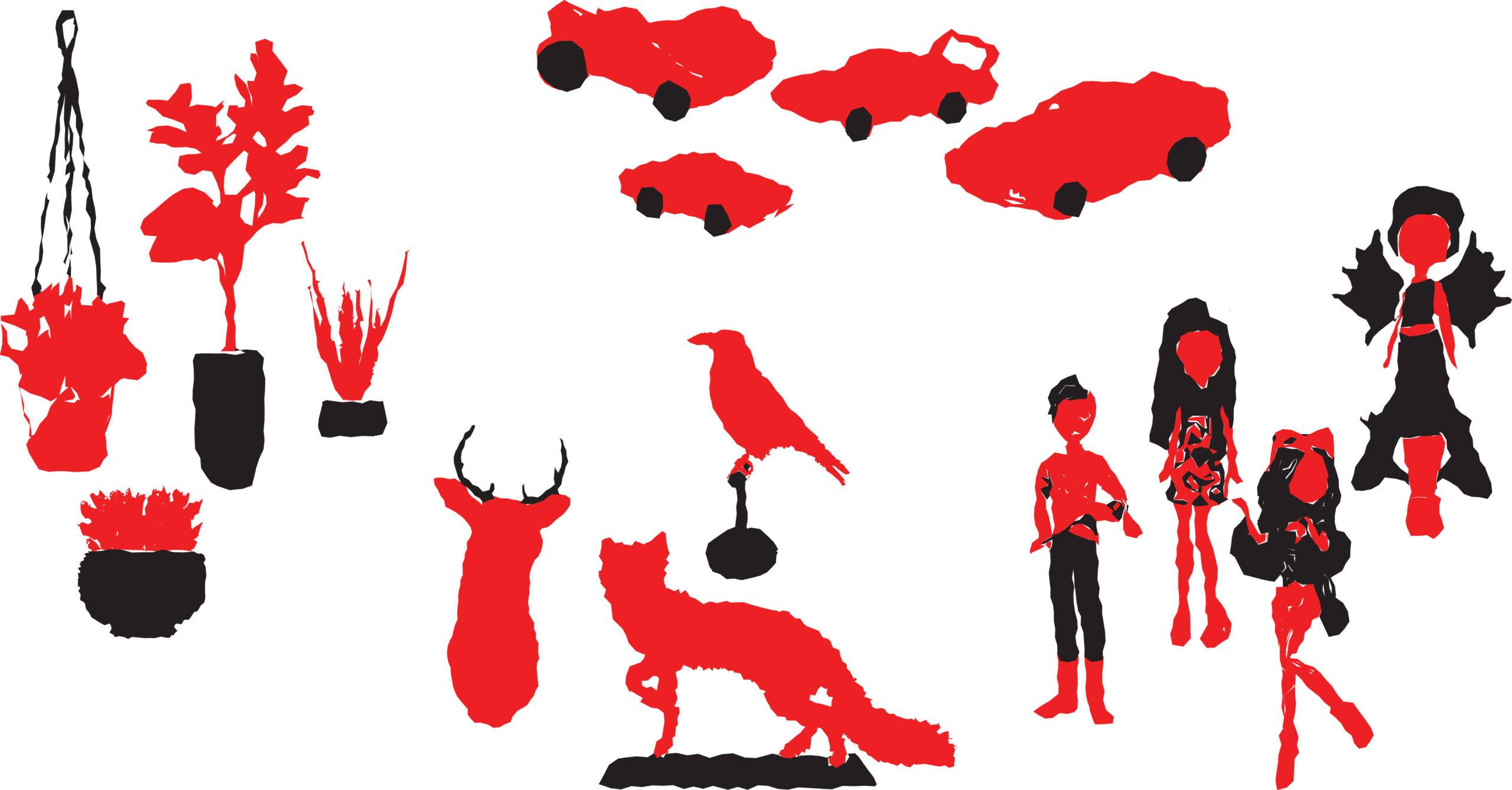Surely by now you’ve seen signs up and down State Street for the Joffrey Ballet’s 2024 spring showing of “A Midsummer Night’s Dream.” And like me, you might’ve been tempted to see it.
Given my extremely positive experience with their Fall production of “Frankenstein,” I figured this Spring’s show would be no different, and yet my takeaway can be condensed down to one thought: Where’s Puck?!
As it turns out, it is not a retelling of William Shakespeare’s famous play, but rather a loosely narrative story surrounding Midsommer, the Swedish festival, which takes place in the form of a dream, presumably at night ; thus making the component parts of the title technically correct.
This title confusion took longer to realize than I would care to admit, in part because the ballet, like Shakespeare’s play, also begins with a wedding-like scene. The opening scene, however, isn’t a wedding but a celebration of Midsummer. Between the coordinated suits, photographer, and champagne popping, could you really blame me for the misunderstanding?
The arc of the play’s story is divided into two sections which reflect the experience of a dream and a nightmare, respectively.
The first half opens with the protagonist of the story, played by Dylan Gutierrez — who also starred as Frankenstein’s Monster in Joffrey’s production last fall — awaking in bed and being led behind the curtain of the main stage by his partner, played by Victoria Jaiani. Following this is an incredibly impressive hay-filled scene as the rest of the company performs a high-energy synchronized romp through the hay as they push it across the stage to fill it in its entirety.
From there, the tone softens with the effect of light rain falling. As the two lovers dance together a third figure emerges, Swedish singer Anna von Hausswolff, dressed in white. She sings a beautiful siren-like song, and though the words of the song clearly weren’t the focus of its inclusion, the lyrics broadly repeat “How long?” and other allusions to the dream the story is framed within.
This was not Hausswolff’s only appearance. She pops in four or five times throughout the performance, with the same song. While her presence is wonderful, the long-winded nature of the song coupled with its repetition does get a bit monotonous.
Nevertheless, from there the story transitions into the celebration of Midsommer proper in a surprisingly contemporary setting. Centered around a maypole, the rest of the company is dressed in modern suits and other business formal attire.
People are lounging about: tanning, a group behind them is setting up a frame tent, and an unrelated pair of lovers steal away a private moment underneath a flagpole bearing the Swedish flag.
A series of ballet scenes centered around the various activities the party indulges in for the festival follows, including an excellently choreographed dance around the maypole. This section is a highlight of the show as everyone was in harmony and created a genuinely compelling performance.
Yet immediately after that high point was an exceedingly uncomfortable, far too drawn-out sequence in which the entire company filed into the very edge of the stage and stood shoulder to shoulder, spanned across the entirety of the front edge of the stage. Then they did, well, nothing.
The obligatory awkward laughter from the crowd began about thirty seconds in, then died down, and repeated on and on like ouroboros eating itself. There was a shared feeling that maybe we were meant to give a cue that the performers could move on, but no matter how many rounds of polite laughter happened, the actors were unchanging. After three real-life painful minutes, one character announced, “a toast!”
This would have hopefully offered a respite from this eye contact-based purgatory, but it didn’t. They passed wine glasses, drank from them, and then, to my horror, resumed their staring. It was in moments like these that I missed Puck the most.
I cannot recount how long the scene went on, but it finally ended with a dining sequence that closed act one. In these dining scenes, there was surprisingly more talking. Characters yelled out, “wine!” Or, “pasta!” with seemingly no rhyme or reason. This thoroughly confused me, not only because it breaks one of the fundamental principles of ballet — no talking — but also because it added no value to the performance.
The Joffrey Ballet performed a brilliant rendition of Mary Shelley’s “Frankenstein” without a single word, so why in this performance, which is far less story-based, does anything need to be said at all?
Nevertheless, act two begins with a much darker tone as the story shifts from dream to nightmare. The beginning section of this act was, in my opinion, the best sequence in the entire ballet.
The protagonist is seated downstage on his bed, and the table from the previous scene had been lifted up twenty feet in the air to create a slide shape which gives the scene a tense, illogical framing. The lights on the stage are in sync with the orchestra, which plays a fast rhythmic beat that rises to a crescendo, at which point the lights go out before coming back on a few seconds later when the beat begins again.
Within the time it took for the music to rise, the actors form short vignettes of nightmarish terror-inducing scenes as the protagonist can only look on and cower from his bed.
These vignettes repeat for a dozen or more small scenes that depict women crying, headless figures, fanatic dancing, and so on. The heavy, dominating soundtrack of the entire segment coupled with the brief scenes of bizarre snapshots truly creates a nightmarish, ever-changing emotion within this section.
As these scenes continue to play on, they build upon each other until all the various characters are assembled in one giant shot, posed for a picture against a backdrop of a huge mackerel. The photographer, from act one snaps a photo of the menagerie and then is silently wheeled off the stage, rigid and unchanging in their posture.
It’s a beautifully eerie high point.
Unfortunately, the show then slips from that high and never seems to return to quite the same level. From then on, Hausswolff once again comes in multiple times to sing a reminder that it’s all a dream, one way the ballet fully discards the guise that it’s about Midsommer at all. The whole company is stripped to only nude-colored undergarments, and any remnant of the festival theming is replaced instead by a sign in the corner that reads “theater dream” in all capital lettering.
The rest of the dances are more standard nonlinear interpretive ballet and continue to peteron until the end of the show, which repeated the same opening with the protagonist waking up in bed and being led behind a curtain.
Every aspect of the ballet is well executed, but it doesn’t build one cohesive experience. The singer’s voice has a beautiful siren-like quality to it, but she sings the same song four or five times to remind the audience that this is a dream. The dancing is perfectly choreographed and incredibly captivating. (especially in the festival section of the first act and the opening scene of the second act) but it doesn’t tie together to form any kind of story or deeper meaning beyond the theme of a dream.
Not to mention the complete bait-and-switch when one thinks about the title versus the performance itself. It may be that I’m harping on it too much, but why name your interpretive, loosely linear ballet after one of Shakespeare’s most famous plays when literally any other name was available to you? I feel that I wouldn’t have been so critical of the performance had I gone in with the proper expectations and yet in lieu of seeing a ballet adaption of the play, I got, well, that.
The entire ballet seems to be comprised of almosts. It’s almost a story, except it completely discards any form of plot from the actual play once it passes the dinner table scene. It’s almost a classic ballet, except for random moments of dialogue which were more jarring than anything. It’s almost Midsommer themed, except for the second act which barring the first sequence completely abandons any theme at all.
All in all, the show was almost great.





















